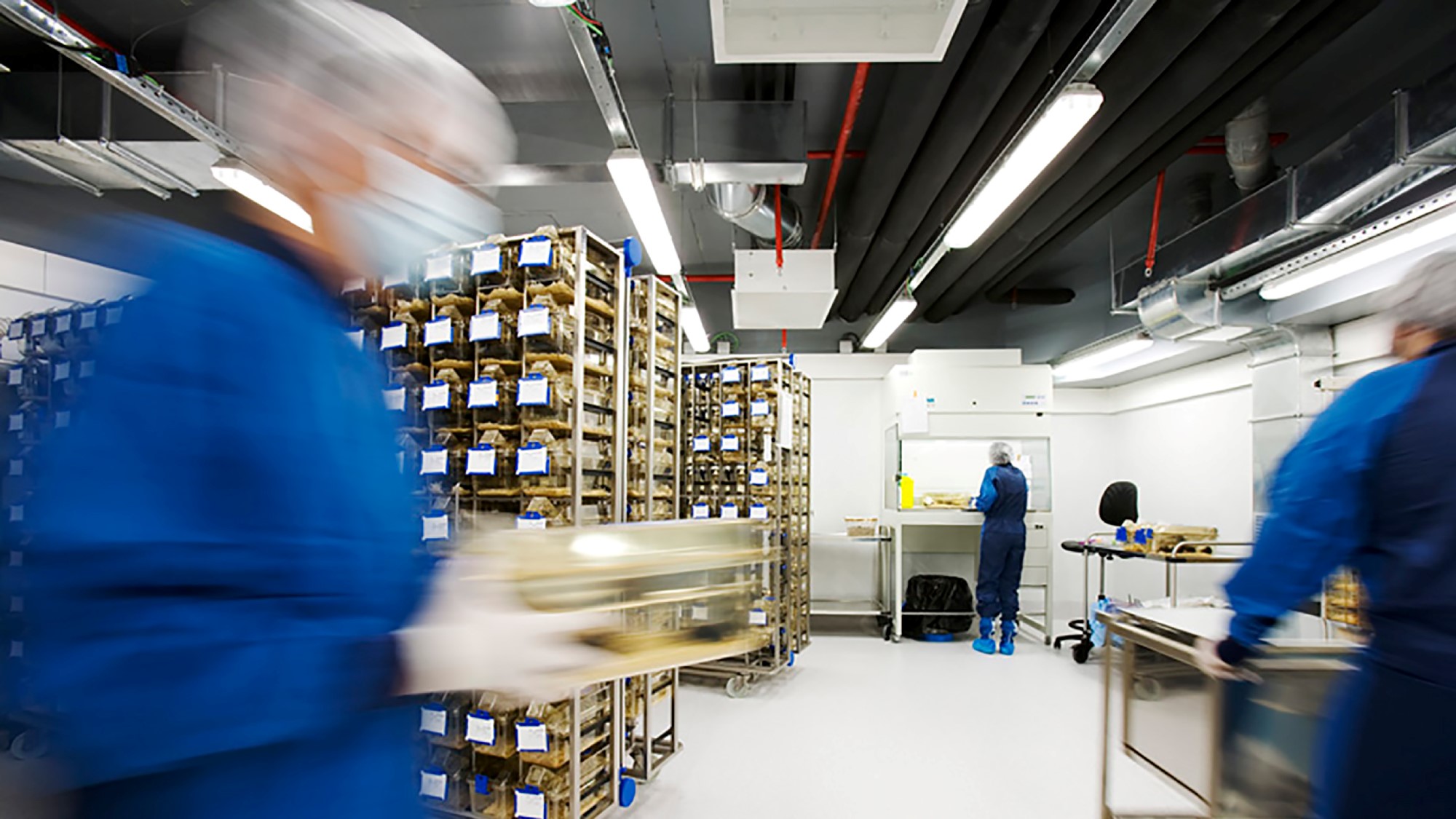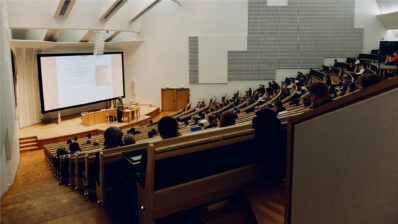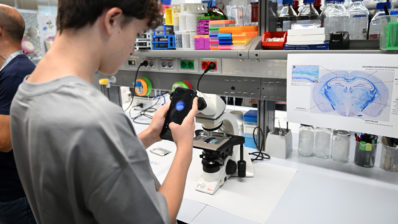On 28 May, a round table on the importance of animal experimentation in science took place in the context of the Barcelona Science Festival.
Representatives of the Agreement on Transparency in Animal Experimentation from COSCE (Confederation of Spanish Scientific Societies), and a member of REMA (Spanish Network for the Development of Alternative Methods in Animal Experimentation) participated in the event. Arnau Busquets Garcia, coordinator of the research group on Cellular Mechanisms in Physiological and Pathological Behaviour at the Hospital del Mar Medical Research Institute (IMIM), was the moderator. He himself had proposed holding this debate on a topic that he considers to be of critical relevance. We spoke with the young researcher, recently admitted to the General Board of the Spanish Junior Academy, about the debate and about animal experimentation in general.
Arnau, why did you decide to organise this debate during the Barcelona science week?
I have personally worked with animal models during my whole research career. I feel that it is a topic that is not talked about enough, and when it is , when it comes out in the media, seeing how the subject is treated…it makes shiver! There is a great lack of knowledge, and I think we have to do what we can to fix it.
There is indeed a very polarised and intense debate about animal experimentation. What have we in the scientific community done wrong so far?
I think the figure of the ‘mad scientist’ locked in a laboratory has done a lot of damage to science in general, and animal experimentation in particular. Scientists have never been fond of explaining well what we do, because there is this idea that people will not understand, or will not be interested. And in the case of animal experimentation something similar happens, plus it is also a bit taboo, and it is a bit scary to talk about it. But we have to overcome that fear, and explain it, because it is an essential tool for our work.
“We must overcome the fear of talking about animal experimentation, because it is an essential tool for our work”
Arnau Busquets Garcia (IMIM)
One of the most common criticisms is perhaps that using animals is the ‘easy way out’ – but is it?
Not at all! Experimenting on animals is very controlled and very costly, both in money and time. To begin with, if you want to conduct an experiment on animals, it is necessary:
- That the person has a certification in animal experimentation; and this involves not only several hours of theory and practice, but must be renewed on a regular basis
- That the project goes through an ethics committee, in our case the Animal Experimentation Ethics Committee (CEEA-PRBB). This committee carries out a very thorough review – as detailed, if not more detailed, than the peer review that is done before publishing an article! It looks not only at purely ethical aspects, but also at compliance with the 3Rs in the study design, namely: Replace animals whenever possible; Reduce the number of animals as much as possible, always ensuring that the results will be statistically valid; Refine the techniques used to improve the welfare and reduce the suffering of the animals.
- That the project then goes through another committee at the level of the Generalitat de Catalunya.
In fact, we scientists are the first ones interested in the welfare of the animals being the best possible. Among other things, because if the animal is not well, the results will not be valid and the projects will fail.
But is it not true that the results of animal experimentation are often not extrapolable to humans?
That’s true… to a certain extent. The problem is that we look for an immediacy that does not exist in research. When there is a negative result, a finding in mice that does not give the same result in humans, we think that it is useless. But in reality, it is just another piece of the puzzle. When we get a tangible result – for example, recently, a paraplegic person managed to take 10 steps – there are a lot of “negative” studies behind it, or basic animal studies that showed which neural connections control motor activity, and so on.
What about alternative methods to the use of animals?
There are more and more, and here at the PRBB in particular there is a lot of work being done on mathematical models, organoids,… They are very useful, but there is still progress to be made; we need more investment in these methods, although we also need more investment in research in general! And now, for the first time, the Spanish Research Agency has opened specific calls for grants for research into alternative methods. We are making progress, and it is essential to do so if these models are to help reduce the use of animals. But frankly, I am sceptical that these alternatives can really give us the answers that a living model can give us.
More investment in alternative methods is needed; but more investment in research in general is needed!
What kind of answers?
I have been working with mice for 10 years, studying neuroscience. The brain is an incredibly complex and heterogeneous organ that regulates our behaviour. And it doesn’t do it alone: the organism is a whole, and there are things that happen in the gut that affect the brain… So, in a way, we would need ‘multisystemic’ organoids – rather than from individual organs – which I would say don’t exist today and we still have a long way to go. However, complementarity between animal models and alternative methods is the future of research.
Are there things that, on the contrary, can be done 100% with alternative methods?
There is research using, for example, organoids from other organs that are not as heterogeneous, such as the kidney or liver, which are giving very encouraging results and could eventually replace some of the animal models used. In addition, there are computational models that increasingly allow predictions to be made and help to reduce the number of experimental animals. But, as I said, I believe that the future of research lies in the parallel use of animal models and alternative methods.
“Complementarity between animal models and alternative methods is the future of research”
What is the IMIM doing to improve the general public’s view of animal experimentation?
At IMIM we want to commit to transparency in animal experimentation, and we plan to create a special section on our website about it, with information about what we do, how we do it, videos, resources… And the PRBB and its centres have signed the COSCE transparency agreement. Personally, I believe that we should be committed to talking about the animal experimentation we do without any kind of restrictions or fears. If we work according to all the established rules, there is no reason not to explain why and how we use animal models in our projects. Only if society has more information, the vision of animal experimentation will change and it will be given the relevance it deserves.







